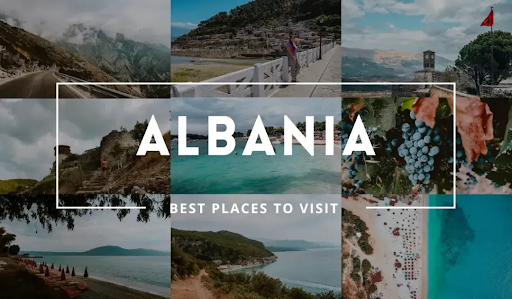
Cultural Tour of Albanian Archaeological Sites
In this seven-day tour, you will explore the archaeological sites of Albania and learn more about the archaeological changes and civilizations that Albania has passed through, including the ancient regions of Illyria and Epirus, and the Ignatia Road, which connected the two imperial capitals, Rome, and Constantinople.
Day 1
Tirana Arrival at the airport and visit to the capital city of Tirana, including its two important museums: the National Historical Museum and the Archaeological Museum.
Day 2: Tirana – Kruja – Durres
Kruja is one of the important cities in Albanian history. The medieval capital of Albania offers a historical and cultural environment with its old bazaar, castle ruins, Skanderbeg Museum dedicated to our National Hero, and the reconstructed Ethnographic Museum. The journey continues to the city of Durres, a significant port city throughout history.
There you will visit the beautiful Roman amphitheater, the archaeological museum, and the Venetian Tower on the Taulantia promenade by the Adriatic Sea.
Day 3: Durres – Apollonia – Vlore – Sarande
A visit to the monuments of the Archaeological Park of Apollonia in Fier and its museum located in the Orthodox monastery nearby, dating back to the 11th century, must be of great interest. The journey then continues from Vlore to Sarande along the coastal road, offering one of the most beautiful panoramas of Albania, and the marvel of the Albanian Riviera.
Day 4: Sarande – Butrint – Gjirokaster
Butrint is the first of three UNESCO-protected sites in Albania included in this tour. The Butrint Archaeological Park is a true microcosm of the Mediterranean as it offers a series of discoveries and monuments from the 7th century BC to the 19th century AD. After visiting all the archaeological discoveries of Butrint, your journey continues to the city of Gjirokaster, the second Albanian site protected by UNESCO, offering a historical panorama of coexistence between past and present.
Day 5: Gjirokaster
During your stay in Gjirokaster, make sure visit the ancient archaeological site of Antigonea. The city emerged in the 3rd century BC by King Pyrrhus of Epirus in honor of his wife Antigone. You will then continue to the ancient site of Adrianopolis, the main part of the Roman city founded by Emperor Hadrian.
Day 6: Gjirokaster – Berat
On your way to Berat, you will also have the chance to visit the ancient site of Bylis. Berat is a beautiful city enjoying UNESCO World Heritage status. Our visit begins with the famous neighborhoods of Mangalem, where Berat Castle is located, characteristic cult objects, the Onufri Iconographic Museum, and the ethnographic museum. Lastly, do not miss the Gorica Bridge, the promenade, and the Osum River passing through the city.
Day 7: Berat – Selce – Lin – Tirana
After breakfast, do not forget to travel to Selca to visit the Selca Graves. After that, we suggest a visit to Christian Basilica, an extraordinary mosaic dating back to the 4th-5th centuries AD. Then, another must-see destination is the new archaeological findings in the village of Lin.
Day 8: Tirana – Shkoder – Tirana
Returning to Tirana, we recommend you stop to north Shkodra, also known as ‘the capital of North Albania’, known historically as the largest and most prosperous city in the country. During this 4-day-tour, you will visit the historic Rozafa Castle, which rises above the Drin and Buna rivers as a symbol of Shkodra’s history and tradition. Shkodra’s 2400-year-old tumultuous history is quite interesting and has much to teach us up to the present day. Meanwhile, the surrounding panorama is breathtaking for anyone who visits, as well as the Marubi Museum and the beautiful and characteristic neighborhoods of Shkodra, the city of religious coexistence and beautiful traditions.



